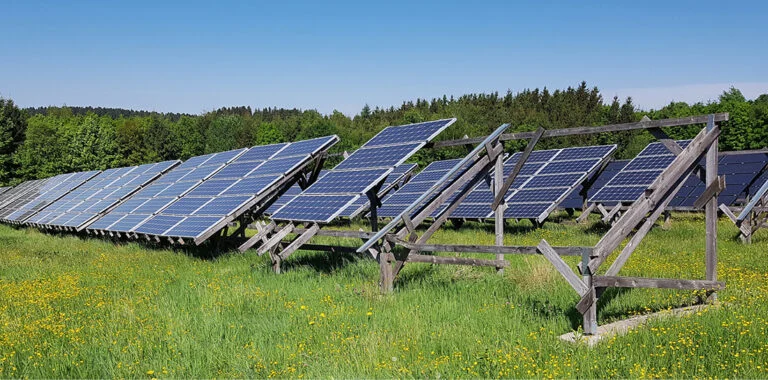Environmental groups call for thoughtful planning for solar in Montgomery County—build first on already developed lands
For more information, contact [email protected], 240-899-9019, or [email protected], 410-921-9229, or [email protected], 240-630-4703
CHEVY CHASE, MD – The Audubon Naturalist Society (ANS) and Clean Water Action (CWA) submitted joint testimony to the Montgomery County Council pushing for thoughtful, sustainable solar development in the County as members consider “Solar Collection System – AR Zone Standards” in the Council’s work session today.
The climate crisis demands bold investment to generate more of our energy from solar and it should go hand-in-hand with thoughtful, advance planning that will first direct solar energy to the lowest-conflict areas.
ANS and CWA argue that the County should commit to finding and prioritizing already disturbed lands such as brownfields, parking garages, utility corridors, along with rooftops and county-owned facilities. New Jersey and Massachusetts have established solar rubric scores to help policymakers plan for solar siting. Montgomery County should complete studies to do the same and prioritize placing solar on already-developed lands first instead of in the Agricultural Reserve meant to protect farmland and natural spaces.
“Montgomery County needs to be smart from the start with solar development. The county has set the ambitious goal to reach net zero of greenhouse gas emissions by the year 2035. The Climate Action Plan and the General Plan are already on this trajectory and in tune with all of the county’s climate, equity and economic needs,” said Denisse Guitarra, Maryland Conservation Advocate for ANS.
Moreover, while the Zone Texting Amendment (ZTA 20-01), claims it will require “pollinator-friendly” solar fields, the habitat these fields will provide will actually be a trap for honeybees and other critical pollinators. “Unfortunately, the state solar-pollinator program that Montgomery County is relying on allows routine spraying of pesticides on pollinator habitat – creating spaces that intentionally attract pollinating insects and then douse them in killer chemicals. To get kudos for providing habitat, routinely poisoning that habitat should be a non-starter,” said Emily Ranson, Maryland Director for Clean Water Action.
Click here to read our full testimony to the Council.
Follow ANS at Facebook.com/Audubon Naturalist SocietyNaturalistSociety, Twitter.com/ANStweets and Instagram.com/ansnature
Follow CWA at Facebook.com/CleanWaterActionMD, Twitter.com/CleanWater_MD, and Instagram.com/cleanh2oaction
###
About ANS: Throughout its 122-year history, ANS has played a pivotal role in conserving our region’s iconic natural places from development including the C&O Canal, Dyke Marsh and, most recently, Ten Mile Creek. Past ANS member and board president, Rachel Carson, author of Silent Spring, is credited with launching the now global environmental movement. ANS’s nature experts provide hundreds of opportunities each year for children and adults to enjoy, learn about, and protect the environment
About CWA: Clean Water Action is a national grassroots organization with 53,000 members in Maryland. For the last forty years in Maryland, Clean Water works for clean, safe, and affordable water, whether in the streams, rivers or Chesapeake Bay, or from the tap through grassroots organizing, policy work, and campaigns.

